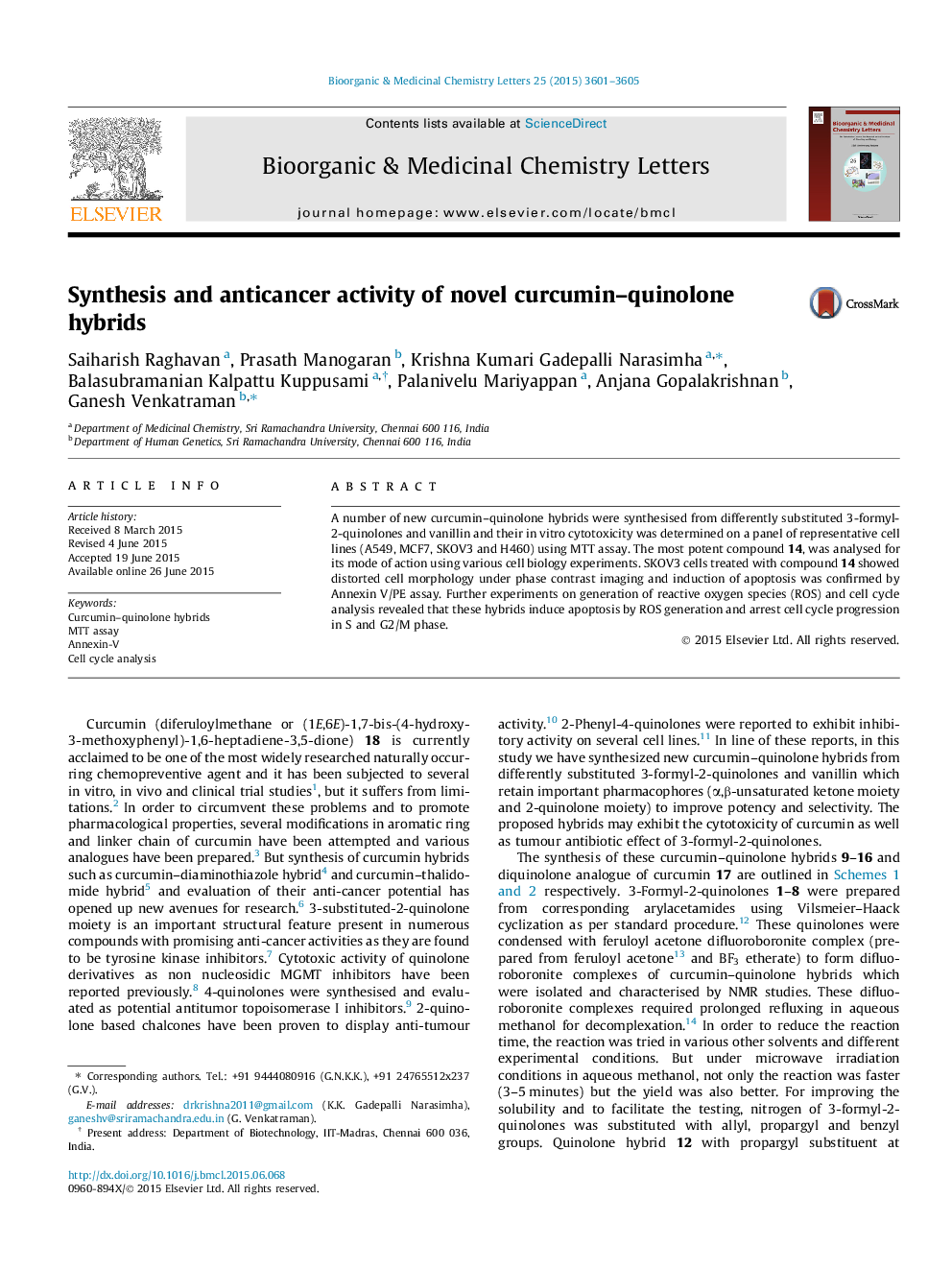| Article ID | Journal | Published Year | Pages | File Type |
|---|---|---|---|---|
| 1370542 | Bioorganic & Medicinal Chemistry Letters | 2015 | 5 Pages |
A number of new curcumin–quinolone hybrids were synthesised from differently substituted 3-formyl-2-quinolones and vanillin and their in vitro cytotoxicity was determined on a panel of representative cell lines (A549, MCF7, SKOV3 and H460) using MTT assay. The most potent compound 14, was analysed for its mode of action using various cell biology experiments. SKOV3 cells treated with compound 14 showed distorted cell morphology under phase contrast imaging and induction of apoptosis was confirmed by Annexin V/PE assay. Further experiments on generation of reactive oxygen species (ROS) and cell cycle analysis revealed that these hybrids induce apoptosis by ROS generation and arrest cell cycle progression in S and G2/M phase.
Graphical abstractFigure optionsDownload full-size imageDownload as PowerPoint slide
